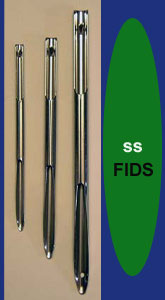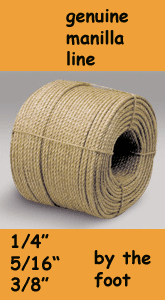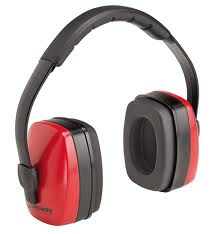
 Custom Search
|
| sails |
| plans |
| epoxy |
| rope/line |
| hardware |
| canoe/kayak |
| sailmaking |
| materials |
| models |
| media |
| tools |
| gear |
| join |
| home |
| indexes |
| classifieds |
| calendar |
| archives |
| about |
| links |
| Join Duckworks Get free newsletter CLICK HERE |
|
|
| November Treasure Chest |
Your HearingThe other day I had a classical example of "oh sh*t, I _should have_..." - you know how it goes. I am taking this opportunity to try and spare you my experience. When I was 18-20 years old, I went to a lot of live concerts without hearing protection. Not a good idea. Well I guess there is no way to teach this to a young person, only mentioning it for the record. Between 20 and 40, I have always only owned El Cheapo power tools. In any case I had a preference for manual tools over electric ones, but of course some things do need power tools to accomplish. As you guys in the US may have heard, European houses often contain a lot of masonry and reinforced concrete. So attaching stuff to walls and ceilings invariably comes with power drilling (unless you glue, as they are advertising now). My El Cheapo power drill used to go "SCREEEEEEEYYEEYYEEYYEEECCHHHH!!!" and not make any reasonable progress, like 2mm/sec in concrete for a 6mm (1/4") drill bit. You get the picture. I must have accumulated several days of solid drilling over the years, or so it feels.
Only at the age of 40 did I get my first good power drill, with a separate electric motor for the drilling (turning the bit) and an electro-pneumatic hammering unit (hammering the bit into the wall). El Cheapo drills do this with an excentric studded wheel that converts a part of the turning motion into a bit of hammering). My new drill is nicely heavy, goes at a relaxed "KRAAAA" and eats into the wall much faster, I would say 1-2cm/sec under conditions as above. It is much less noisy and the exposure time is reduced by a factor of 5-10. Hey. This is a boatbuilding site. Who cares about concrete, why am I telling you this? - Well it's simple. Similar statements apply for your saber saw, skilsaw, router and others. All of these are really very loud. A few weeks ago, I suffered from a sudden loss of hearing (on one ear only, fortunately). It may be related to stress at work, but I am sure it is also related to accumulated ear damage over the years from noise exposure. So far it looks like my hearing is not coming back fully. Hence my advice: 1) Do work with good tools. When pondering that super offer for the tool you always though you needed, do check its noise rating. Consider if saving a few bucks is really worth your health. If you can't afford a good tool, don't buy one at all, but rather borrow one from a friend. You will be surprised how happily many people will lend if you just ask. 2) Do use protection. Micky mouse ear protectors look stupid, but they can save your hearing over time. They are surprisingly cheap, actually. I got mine for less than $10, and they have a -39dB rating = roughly, they turn the noise of a starting jet airplane into that of an electric lawnmower. Consider for how many more years you want your ears to work flawlessly. Be nice to them for a change. You also brush your teeth daily, don't you? 3) Do the same for your other vulnerable senses - wear protective glasses, protect your hands and your respiration. Really, good quality protection gear is not that expensive. Our sensual organs are so complex that the body has not provided for a lot of redundancy. If they are gone, they are gone. Of ears and eyes one can say "there's still one left", but let me tell you: it ain't the same if the 3D seeing/hearing is gone. So. I now use good tools AND protection. If you do the same, you will also give your loved one one less possible pretext to stop you from boatbuilding :-) Mario Stoltz, Hamburg Camp Sailboat
I posted a newly completed, free 40+ page construction guide to building a class-legal PDRacer in the "CAMP SAILBOAT" folder in the files section of this forum. For those who haven't navigated to the files section in the new-look Yahoo groups, click on the "More" button at the top of the page under the photo, then click on the "Files" button to get to all the files that have been posted here. Here is my file. This construction guide grew out of my desire to replace a similar file that I wrote and posted on my web site in 2005 detailing how I built my first PDRacer Lame Duck hull #100. I've since built or helped others build 17 PDR's or "near" PDR's, and drew upon that experience in drawing up the 11 panels of plans and the narrative for this guide. The narrative is presented in a 6-day "Camp" format, where each day's construction activities are detailed, so that the hull is completed by Day 3 and launch is scheduled for Day 6. The simple design of "Redneck Duck" calls for 3 & 1/2 sheets of 1/4" BC plywood, (1) 1/2" 2' x 4' sheet and a few sticks of 1" x 2" & 3" x 8' to complete the hull with almost no scraps. There is a very complete materials list, tools list, and plenty of photos because the plans are primarily aimed at novice builders and group hatches. Experienced builders will find the plans easy to alter to meet their own needs. "Redneck Duck" is multi-purpose, so the design calls for an offset mast and rudder to allow for a motor mount. The cockpit is large so that a parent or grandparent can take along a young crew member for training, yet the hull is very stiff, and weighs just over 75 lb. before the boards, mast, oars, and $10 Walmart beach chair(s) are added. The 15" sides, elevated bow transom, and "splash guard" transom reinforcement pieces should keep everyone dry, and there is foam flotation all around in case of an unexpected capsize. I'm currently working with a local grandfather to complete a prototype and with a couple of others to complete an online hatch based on this guide. Their input will be valuable in improving the guide still further. I'm looking forward to launch photos of their versions of the "Redneck Duck" design to incorporate in the plans. Dave Gray Ask the DesignerI went to Sail Oklahoma recently and I liked the Ask the Designer session. During the Ask the Designer session, someone in the crowd asked the very relevant, intelligent, and pertinent question: How do you feel about epoxy pre-coating the pieces prior to assembly? Dave Gentry of Gentry Custom Boats (specializing in Skin on Frame construction) said he doesn't pre-coat any of his stringers or frames. He doesn't treat them at all. He said if a person wanted, rubbing the parts with teak oil is sufficient. Chuck Leinweber, known wood butcher and owner of Duckworks Magazine, said he never pre-coats parts. He's always felt that it is an extra, unnecessary step taking up time and not providing any benefit he could see. Graham Byrnes of B&B Yacht Design provided a comprehensive answer (paraphrasing): He does not believe in pre-coating as it can increase the stiffness of the board, possibly not allowing it to conform to bends as the designer intended. Of greater concern to him is the quality of the bond, primary bond - epoxy to wood - vs secondary bond - epoxy to epoxy. In the primary bond, the long-chain molecules in epoxy resin penetrate, tangle, and coil into the wood cell structure. In a secondary bond, the epoxy is bonding to epoxy. The surface of the epoxy should be sanded and roughed up to provide a 'cleating surface' for the new epoxy layers. to bond to. While this is still a powerful bond, it does not have the same strength as a primary bond. Graham went on to advise epoxy should be applied in layers until the surface appears smooth. One or two layers is not sufficient, but three usually does the job. He also advises strongly against thinning epoxy with a solvent like Acetone as the layer will be weaker and prone to penetration of moisture due to vapor pressure. There was also a discussion of playing mix-n-match with resins and hardeners from different manufacturers. All panelists agreed that the resin was not the issue - what was important is the ratio of the mix between resin and hardener. As long as the manufacturer's specification of the ratio is followed, everyone agreed a builder could use resin from Manufacturer A with hardener from Manufacturer B. In this discussion, Graham stated he prefers 2:1 epoxies over 5:1 epoxies as it is easier to get the mix right. So long as a builder is within 20% of the correct ratio, the epoxy will generally function as designed, and it is easier to get a 'within acceptable limits' with 2:1 epoxies. In Summary:
Andrew Linn |
|





